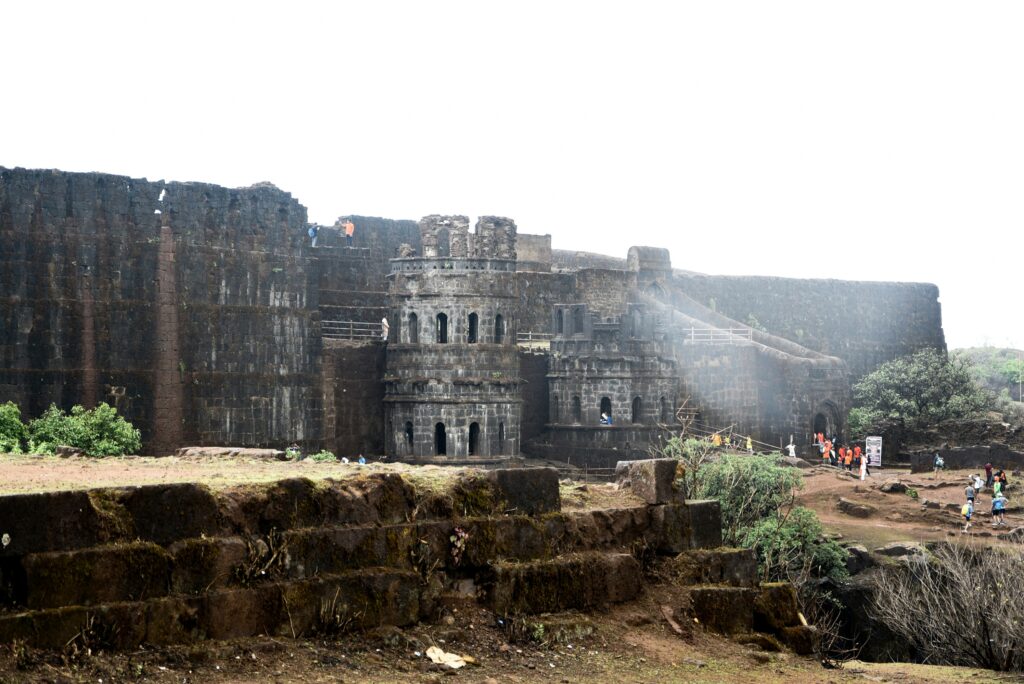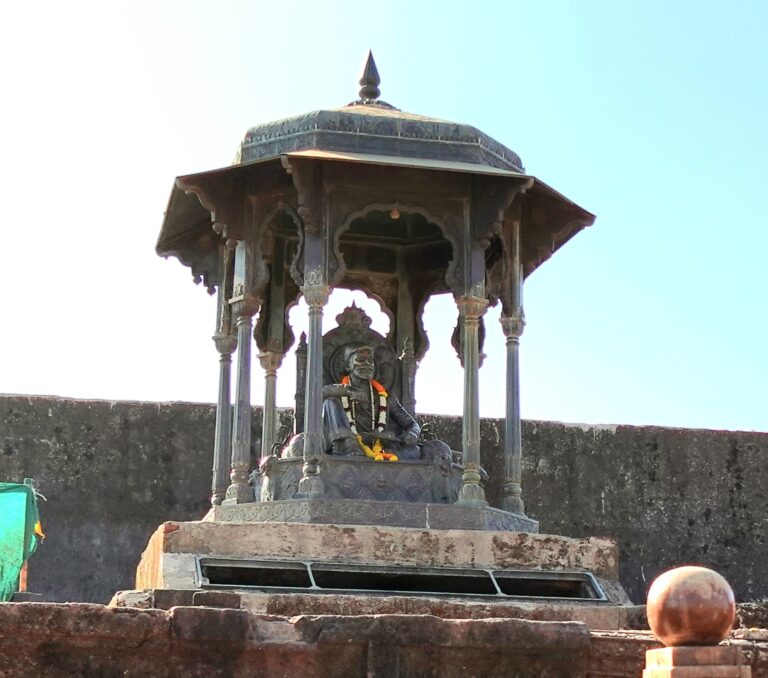A proud moment for every Indian, especially for the people of Maharashtra — UNESCO has officially recognised 12 Maratha forts as World Heritage Sites under the name “Maratha Military Landscapes of India”. These forts, symbols of strength, vision, and governance, reflect the unparalleled legacy of Chhatrapati Shivaji Maharaj and the Maratha Empire.
This declaration by the UNESCO World Heritage Centre brings global recognition to the Maratha dynasty’s architectural and strategic brilliance.
Now that these forts are part of the UNESCO World Heritage list, there are strict rules for how they should be maintained and repaired. This means they will be protected properly and kept in their original form. These forts of our beloved Chhatrapati Shivaji Maharaj will now get the care and respect they truly deserve. The state government will receive support and funds for their preservation, and it’s also a great opportunity for Maharashtra to invest more in protecting this proud legacy
Before these forts were added, some other places from Maharashtra were already on the UNESCO World Heritage list. These include the beautiful Ajanta Caves and Ellora Caves which were added in 1983, the Elephanta Caves in 1987, the Chhatrapati Shivaji Maharaj Terminus in Mumbai in 2004, and the Western Ghats (also called the Sahyadri Hills), which were partly included in 2012. Now, with the addition of the Maratha Military Landscapes, Maharashtra has a total of six UNESCO World Heritage sites. This is a proud moment for our state and shows how rich our culture and history are. https://maharashtradiscovery.com/unesco-world-heritage-site-in-maharashtra/
Here’s the official UNESCO link where the “Maratha Military Landscapes of India” inscription is published https://whc.unesco.org/en/list/1739
As someone who has personally visited Shivneri, Pratapgad, Raigad, Lohagad, and Panhala, I am overjoyed and humbled to see these living monuments
finally get their due on the world stage.
What Is the ‘Maratha Military Landscapes of India’?
The newly inscribed site consists of 12 forts:
- Salher
- Shivneri
- Lohgad
- Khanderi
- Raigad
- Rajgad
- Pratapgad
- Suvarnadurg
- Panhala
- Vijaydurg
- Sindhudurg – All in Maharashtra
- Gingee Fort – Located in Tamil Nadu
These forts represents India’s rich cultural and strategic legacy.
Why This Recognition Matters
This UNESCO status means much more than just international recognition. It represents:
- Respect for Indigenous Knowledge: Showcasing Indian wisdom in using terrain for strategic advantage.
- Preservation of Heritage: Ensuring that future generations will experience the same inspiration and pride.
- Tourism Boost: These forts will now attract global visitors, historians, and researchers.
My Personal Journey to the Forts

1. Shivneri Fort – Where It All Began
Shivneri is the birthplace of Chhatrapati Shivaji Maharaj, located near Junnar. This fort is historically significant and spiritually enriching. The serene surroundings and strong fortification still stand tall today.
Walking through this fort feels like stepping into the early chapters of Swarajya.
2. Pratapgad Fort – Symbol of Courage and Devotion
Situated near Mahabaleshwar, Pratapgad is a strong hill fort known for its bold architecture and scenic beauty. I was fortunate to visit not only the Bhavani Mata Temple, where Chhatrapati Shivaji Maharaj was believed to draw strength, but also witness the sword of Sarsenapati Hambirrao Mohite, a respected general of Chhatrapati Shivaji Maharaj’s army, displayed at the fort.
The atmosphere here is deeply spiritual and patriotic, with every stone narrating a story of valour.
3. Raigad Fort – Capital of the Maratha Empire
Raigad holds a special place in Indian history as the capital of Swarajya and the site of Chhatrapati Shivaji Maharaj’s coronation. The Samadhi of Chhatrapati Shivaji Maharaj, Jagadishwar Temple, and majestic viewpoints make it one of the most moving historical experiences I’ve ever had.
Climbing the steps of this fort made me realise how strong and well-planned the capital was — it must have been very difficult for any enemy to even reach the gates.
4. Lohagad Fort – Fort of Strength
Located near Lonavala, Lohagad is easy to reach and very popular among trekkers. I visited it during the monsoon, and even though there was fog and rain, the beauty of the fort was unforgettable.
5. Panhala Fort – Story of Strategy and Endurance
Panhala near Kolhapur has played a crucial role in several key chapters of Maratha history. Visiting Panhala gave me deeper appreciation for the determination and resilience of Chhatrapati Shivaji Maharaj’s leadership.
Overview of the Other Forts in the UNESCO List
Though I’m yet to visit them all, here’s what makes each remaining fort special:
Salher Fort in Nashik is the highest fort in Maharashtra. It was the site of a major battle where the Marathas defeated the Mughals.
Rajgad Fort was the first capital of Chatrapati Shivaji Maharaj’s kingdom. Its strong design and multiple layers of defence make it very special.
Khanderi Fort is a small island fort near Mumbai. It played an important role in protecting the coast and sea routes.
Suvarnadurg Fort stands on the Konkan coast. This sea fort helped control trade and invasions from sea attacks.
Vijaydurg Fort is often called the Gibraltar of the East. Shivaji Maharaj personally worked to make it strong and difficult to capture.
Sindhudurg Fort was built by Chatrapati Shivaji Maharaj on an island near Malvan. Surrounded by sea, it was a key naval base showing Maratha maritime strength..
Gingee Fort in Tamil Nadu was a strategic fort in South India. It became part of the Maratha empire and was used for defence in the southern region.
UNESCO Criteria for Selection
These forts were selected based on:
- Outstanding Universal Value (OUV)
- Integration with natural landscapes
- Unique Maratha military architecture
- Historic testimony to indigenous empire-building
The Maratha forts used natural terrain like hills, cliffs, islands, and coastal zones to design nearly invincible structures with sustainable water systems and supply chains.
Impact on Tourism and Heritage Preservation
This UNESCO recognition will:
- Encourage better conservation
- Boost state and eco-tourism
- Inspire young generations to learn and take pride in Indian history
As someone who regularly travels to forts and temples, I can already see more efforts being made to improve signages, access roads, and heritage cleanliness.
A Moment of Joy and Responsibility
As an Indian who grew up admiring Chhatrapati Shivaji Maharaj, this announcement feels like a dream come true. These forts were not just military outposts but seats of governance, culture, justice, and vision.
Now that they are on the global map, it becomes our responsibility to visit, preserve, and promote them respectfully. I am excited to continue my journey and visit the remaining forts soon. If you haven’t visited them yet, I wholeheartedly encourage you to start — every step on these forts is a step into the proud pages of our history.
